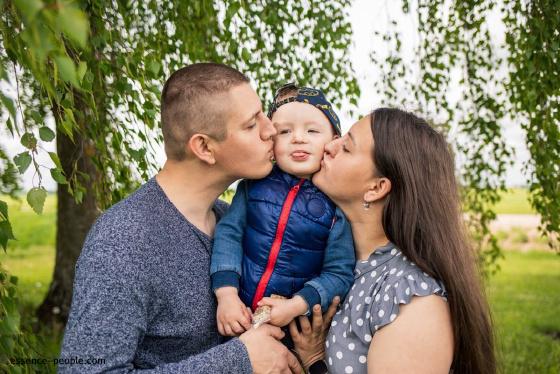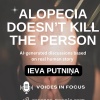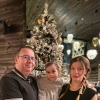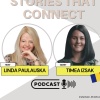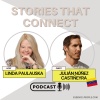
Facing Infertility and Becoming Parents Through IVF at a Young Age: Auzins family
Right after high school, Valeria and Aivis celebrated their wedding and dreamed of welcoming a little one. What seemed like a simple desire turned into a journey filled with challenges, navigating a path that many couples fear to tread—medical fertilization. Here’s Valeria’s story:
Early Dreams
My husband Aivis and I had always dreamed of having a large, vibrant family—a dream that seemed within reach when we married young, right after high school. I was 18, and Aivis was 19. Freshly wed and deeply in love, we believed that starting our family would be straightforward.

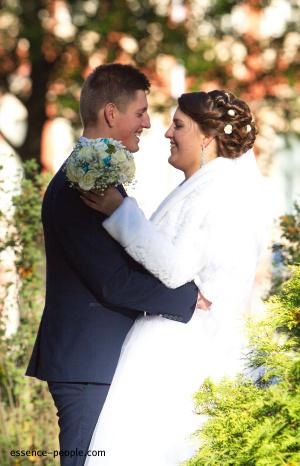
Unexpected Challenges
However, life had different plans. After several unsuccessful attempts to conceive naturally, we found ourselves facing a harsh reality. I had always struggled with irregular menstrual cycles, a concern dismissed by doctors until it could no longer be ignored. When we couldn’t conceive, further medical consultations revealed that I had polycystic ovary syndrome, which meant natural conception might never be possible for us.
Our journey to parenthood led us to an IVF clinic.
I remember the mix of nerves and hope as we walked in for the first time. Gradually, the clinic became a place of calm and hope. We developed a great relationship with the doctors, and it felt like appointments were meetings with a friend who genuinely cared. Medical tests confirmed our fears but also paved the way toward state-funded medical fertilization. The waiting period was filled with uncertainty and emotional highs and lows.
The Process
While waiting for nearly a year for our IVF process to begin, we prepared ourselves physically and emotionally by staying healthy, eating well, exercising, and maintaining a positive mindset. When the process started, I was prescribed hormonal therapy to stimulate my ovaries to produce multiple eggs. A nurse trained both me and my husband to inject the medications into the middle of my abdomen at home. Emotionally, I had to overcome my fear to inject myself, something I never thought I could do.
We visited the clinic several times so the doctor could monitor the progress of the egg stimulation.
Critical Procedures
During one of the visits, the doctor determined that the follicles had reached the required stage and scheduled the day for the puncture. Puncture is a procedure during which I was under intravenous anesthesia while the doctor accessed my ovaries to extract the eggs. In total, 27 follicles were retrieved.
At the time of my puncture, my husband had an important task: to provide sperm at the clinic.
After the procedure, my husband waited for me, and I rested in the ward. Meanwhile, the medical staff in the laboratory fertilized my eggs with my husband’s sperm.
Embryo Development
After combining the eggs with my husband’s sperm, we had 21 embryos by day two.
By day five, when the embryos reached the readiness stage, we had five embryos left.
In a standard situation, on day five, an embryo transfer would be performed, placing the embryo in the uterine cavity. The remaining embryos would be cryogenically frozen for future use. In our case, it wasn’t possible to perform the transfer immediately, so all the embryos were frozen.
Setbacks and Success
While using the hormonal medications, I developed ovarian hyperstimulation syndrome. To reduce the effects, I received medication through an intravenous system every day for two weeks—at the hospital on weekdays and at home on weekends. The hyperstimulation syndrome eventually subsided after three months. The doctor confirmed I was ready and scheduled the transfer for a specific day in May 2019.
The first transfer was unsuccessful. Tears and heartache followed… I was devastated. I couldn’t speak or enjoy life. I didn’t want to see or hear from anyone. I was emotionally shattered.
But Aivis was my rock, always reminding me of the strength I had inside. With his encouragement, we decided to try again.
The second transfer brought joyous news—we were pregnant.

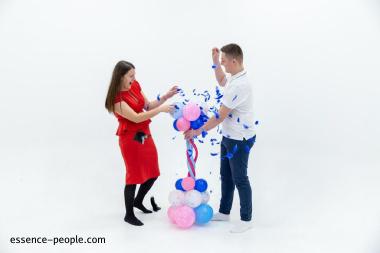
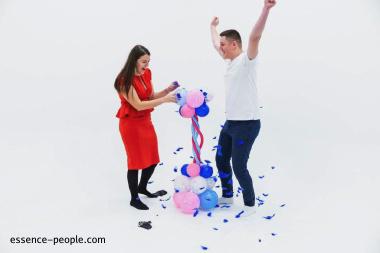
Becoming Parents
The pregnancy wasn’t easy. I faced health challenges that brought new fears but also strengthened my resolve. When our dearly awaited son Tomass finally arrived in May 2020, we were overjoyed. He is a symbol of our perseverance, our love, and our unbreakable bond.
Connecting with Others
I now share our story because I understand how important it is to hear others’ experiences and to connect with people who face similar challenges.
Our story was featured in Latvian media, which connected me with others—I know our story has helped not only others but has also been a healing process for me. I’m happy to support others going through this emotional journey.
Looking Forward
Looking back, I realize that every hurdle was part of a journey that shaped us into the family we are today. We are more than just Tomass’s parents; we are a testament to the power of hope, resilience, and love. We are truly a happy family.
